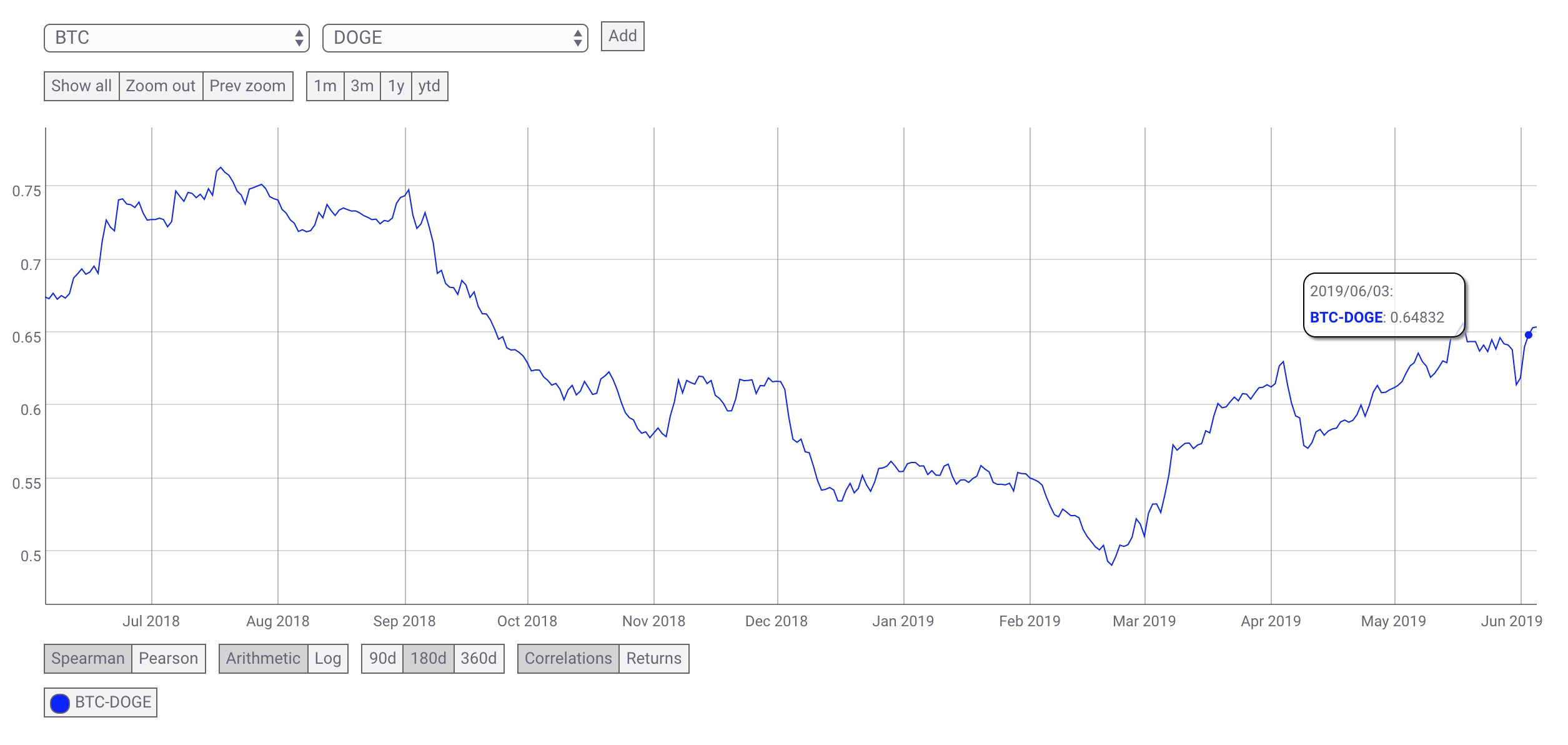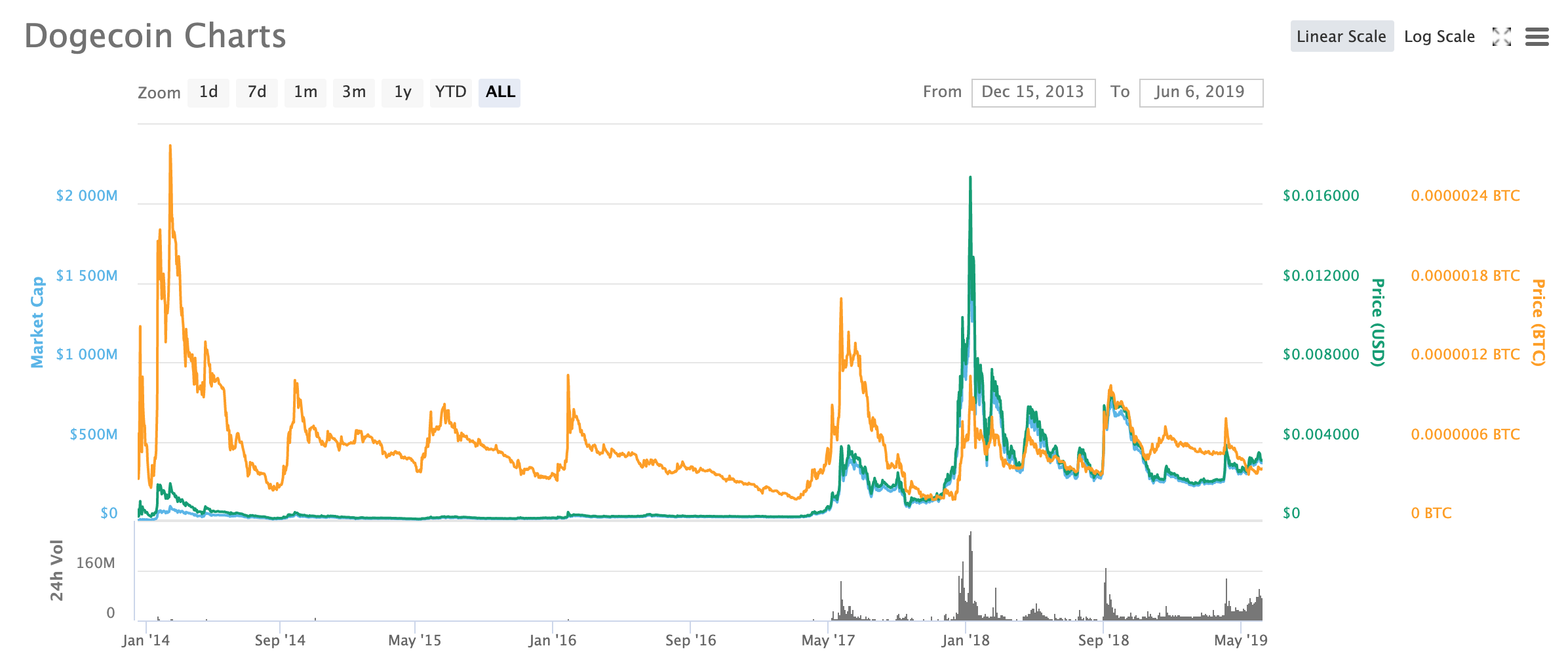DOGE Lack Of Correlation Could Offer Traders Market Opportunities
Is DOGE about to be unleashed again?

Share this article
Dogecoin is not thought of as a “serious investment” by many, especially since it originated from a meme of the internet-famous Shiba Inu canine breed.
Jackson Palmer introduced the project on Twitter in November 2013 as a bit of a joke, and he was encouraged by friends to see it through. He registered dogecoin.com, started working, and was eventually approached by Billy Markus who thought DOGE might actually be a radical idea.
The two of them thought Dogecoin would encourage newcomers to join the crypto community since it was more fun (and less daunting) than Bitcoin. Also, Bitcoin was developing a poor reputation at the time in the media for its use on the the dark web and its association with Silk Road.
In June 2014, Palmer left the project by simply tweeting “Unsubshibing” – and he has now left Twitter for good.
Despite the coin’s unlikely origins, the project has outlasted other altcoins that were launched from 2013-2014 and has proved to be resilient during bear and bull markets. Our analysis shows that it might be worth a trader’s time to give the coin a second look.
Dogecoin Correlation – Or Lack Of
Interestingly, DOGE is actually one of the top-10 least correlated coins to Bitcoin. Average correlations for top-100 coins are in the highly correlated area of 0.7-0.9, and DOGE sits outside that area with averages in the 2019 being between 0.5 and 0.65.

The less-correlated nature means that holding DOGE could be advantageous to hold in a crypto portfolio.
Price Cycles
Clear cycles emerge when doing a price analysis of DOGE/BTC. By looking at the orange line (DOGE sat price) below you can clearly identify these patterns that have been occurring since 2014.

What we can discern from the DOGE/BTC price over the course of the last two years is that clear buy and sell zones have emerged. The “buy zone” seems to be between 20 and 40 sats and the “sell zone” is above 65 sats.
The caveat is that you want to be on the right side of the cycle. Right now, the price is in an accumulation zone below 40 sats, and if this cyclical history is any indication, we’re set to bottom out at a lower price before retesting the “sell zone”. But how long could that be?
Historically, the length of these DOGE/BTC cycles have varied. In our analysis we counted seven different cycles with an average length of nine months from peak-to-peak (high to high). DOGE/BTC hit 70 sats at the beginning of April, so we’re two months into this current cycle.
Although our deep analysis of the coin made clear that it’s almost entirely dependent on community efforts to keep it alive, if you’re an experienced trader, Dogecoin could be a coin to add to your portfolio: precisely because of its lack of correlation with Bitcoin and its cyclical patterns, where you can make long term bets on buying and selling respective zones.
